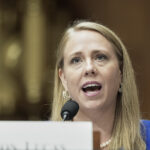For reasons that remain incomprehensible to me, some lawmakers tend to believe that they have a constitutional duty to meddle in rate filings.
South Carolina Insurance Director Ernst Csiszar was the first to admit that he looked a little bedraggled sitting there at the witness table in his red cotton sweater and khaki-colored corduroy pants (his house was still without electricity because of an ice storm two days earlier).
Nevertheless, Csiszar did not let his casual attire or the icy weather conditions outside deter him from testifying last month before the Senate Banking and Insurance Committee on Senate Bill 686, a bill that, if enacted, will bring flex band rating to his state’s homeowner’s insurance market.
That Csiszar testified at all despite his personal circumstances is very commendable, but, for me, his actions raise a broader question: Why haven’t the other Southeastern commissioners shown a similar level of interest in rate modernization?
Florida, Kentucky stir with activity
In fairness, there are signs that some other Southeastern states may take up the issue this year.
The Florida House Insurance Committee has begun an early dialogue on rate modernization based on an interim staff report, “Rate Modernization: The Past, Present and Future.” While the 37-page report does not endorse a specific rating regime, it presents a succinct overview of the issue that lawmakers should find useful when the legislative session begins March 2. In Kentucky, House Concurrent Resolution 41 was introduced directing the legislative research commission to study auto rate increases and to make recommendations to decrease or stabilize rates. Unfortunately, the sponsor withdrew the resolution.
So, why is there an apparent reluctance to pursue rate modernization? If you were to ask a group of insurance regulators, they probably would say that overseeing rates helps them to better serve and protect the public interest and mitigate market failures. Consumers, by and large, are more sophisticated shoppers today, even when purchasing auto and homeowner’s policies. They have access to all kinds of information, including timely advice from insurance department consumer specialists as well as company and independent agents.
As for market failures, when was the last time an insurer was placed in liquidation because its rates were too high? Market failures are due to several factors, but the safety nets created over the past decade by the National Association of Insurance Commissioners (NAIC) accreditation process now make it possible for regulators to monitor an insurer’s assets and liabilities better than ever before.
Another reason often cited for rate inaction is bureaucratic inertia. Regulators sometimes simply do not want to change their ways. Even this argument is no longer valid, especially if you consider that most governors are frantically scrambling today to find ways to reduce their budget deficits.
Should regulators pore over 50-page rate filings, looking for errors from regulatory advisories issued a dozen years ago and by doing so, not compile the regulatory “gotcha’s” into a document for filing managers to follow before submitting their forms? Or, should regulators spend their time devising computer programs that will better monitor the entire marketplace? I tend to think the latter is a more efficient and effective process.
‘Politics’ make their play
Finally, there’s the whole question about the “politics” of rate modernization.
For reasons that remain incomprehensible to me, some lawmakers tend to believe that they have a constitutional duty to meddle in rate filings. Three Southeastern insurance commissioners (Georgia, North Carolina and Mississippi) are elected, while three politicians instead of one now oversee the Florida Office of Insurance Regulation. Is it just a coincidence that in each of the three Southeastern states with elected commissioners we see a “prior approval” scheme for personal lines?
The National Association of Mutual Insurance Cos. (NAMIC) has a goal to help begin a dialogue with lawmakers and regulators over whether states can move towards rate modernization and especially for personal lines. We are not alone.
In the past year, the National Conference of State Legislators and the National Conference of Insurance Legislators have both endorsed resolutions urging state insurance departments to consider rate reforms as a way to become more effective and efficient and to ward off possible federal intervention. Even the NAIC, while not totally endorsing rate modernization, called for improvements last September to the rate and form filing process in its Reinforced Commitment: Insurance Regulatory Modernization Action Plan.
Perhaps it’s time to stop worrying about our respective “appearances,” and to pull on a red sweater and a pair of corduroy pants as did Ernst Csiszar, and start having a more meaningful debate.
David Reddick, is Southeastern regional state affairs manager for NAMIC, a national P/C trade association.
Topics Legislation Florida
Was this article valuable?
Here are more articles you may enjoy.


 Abundant Reinsurance Capacity Accelerates Market Softening During 1/1 Renewals
Abundant Reinsurance Capacity Accelerates Market Softening During 1/1 Renewals  Longtime Motel 6 Spokesman Tom Bodett Settles Lawsuit Against Chain
Longtime Motel 6 Spokesman Tom Bodett Settles Lawsuit Against Chain  Head of EEOC Urges White Men to Report Discrimination
Head of EEOC Urges White Men to Report Discrimination  Freight Broker Says $400K in Lobster Meat Stolen in Fictitious Pickup
Freight Broker Says $400K in Lobster Meat Stolen in Fictitious Pickup 


